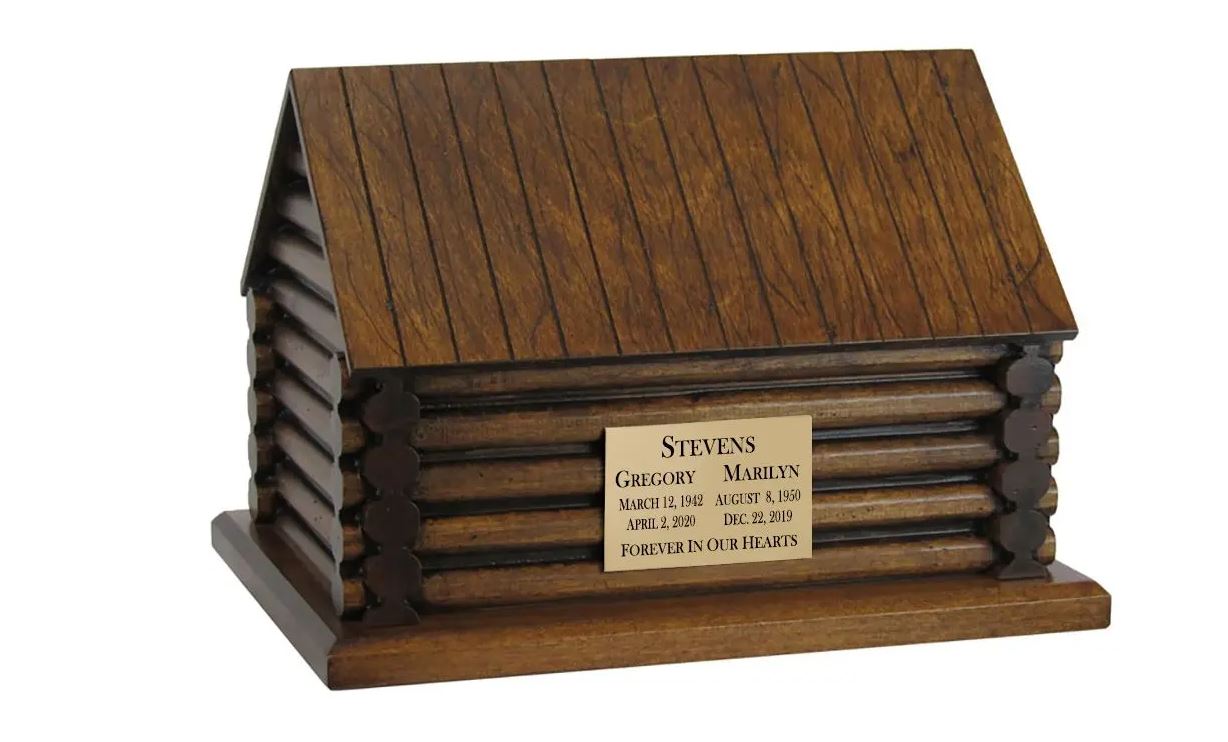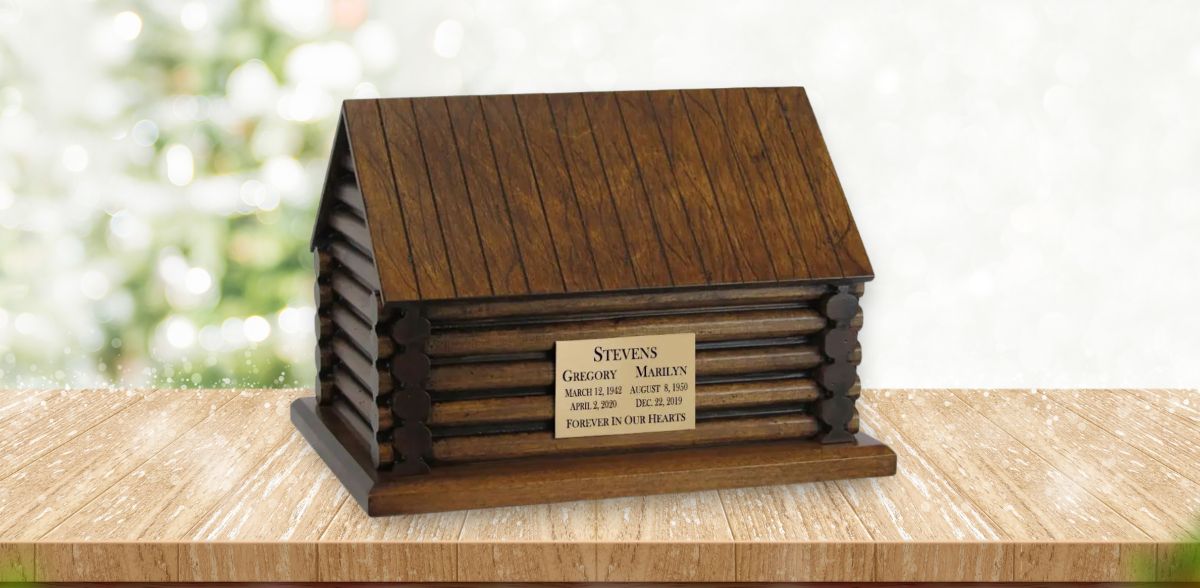
Set me free in the wilderness,
Where my spirit soars among the clouds,
Where my heart breaks loose from its chains,
And Nature is a balm for my soul.
Turn me loose to wander the mountains and valleys
With sun-dappled wildflowers and sparkling brooks,
Where my thoughts resonate in the deep silence,
Days and nights are measured by the sun and the moon,
And where I feel eternally at home.
It’s easier to live in the moment when we are surrounded by nature. Our senses come alive when we breathe fresh mountain air, hear the chorus of bird songs, and see beauty everywhere. Of course, a cozy seaside cottage also has its charms: the salt air and the hypnotic sounds of waves wash away our worries and cares. For a true country lover, almost any unspoiled countryside will do.
Yet of all the country lover homes, the one that epitomizes the simple life is a log cabin. Living the log cabin life lets us connect with our roots, as we remember our pioneer ancestors who explored the wilderness with a sense of adventure, independence, and self-reliance. In our rustic log home, we commune with nature in a mood of contemplation, undistracted by worldly matters. We carry out our basic daily activities in the spirit of the Zen saying, “Chop wood, carry water”—that is, no drama, only appreciation for the ordinary magic in life.


By living close to nature, we can throw off the stress of modern life. We avoid the speediness of rushing from one place to another to accomplish our daily tasks. Even sitting on the porch, watching leaves blow in the breeze, creates a calm state of mind. The trees and the wind become part of us; our mind extends outward, everywhere. When we are immersed in nature, there is no “me” in here with everything else out there. We are part of the grand design of the universe, connected to nature’s subtle energies and recharged by them.
You really can’t put a price on a lifestyle like this, where your days are calm, sunny, and peaceful, and you see starry skies at night. The Japanese have done studies on “forest bathing,” in which we reap healthful benefits from walking in a forest. This is due to our absorption of phytoncides, which are like pheromones produced by trees.
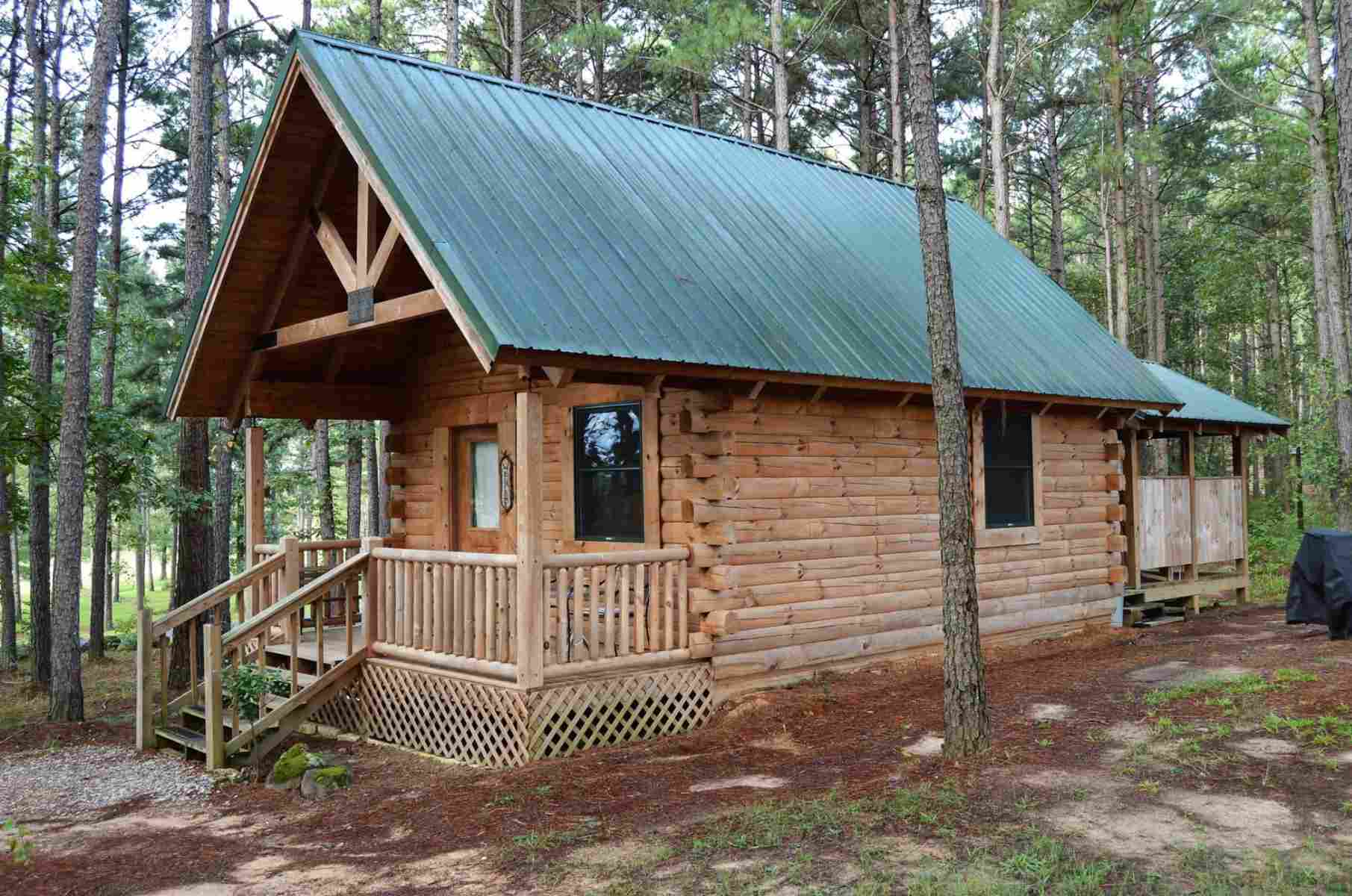

Many people long to live a simple life, close to nature, and what better way to do this than in a log home? A log cabin symbolizes freedom. The whole point of a log cabin is its location: a beautiful wilderness area, far away from traffic congestion, noise and light pollution, foul air and water, and zoning restrictions that create cookie-cutter neighborhoods and a cookie-cutter mindset. A cabin is our escape from the mundane world of busyness
Whether we build our own cabin or renovate an old log home, we can give rein to our creativity in so many ways. We can grow organic food in a bountiful garden, decorate our house with unique craft items we make ourselves, and do whatever we want to beautify our yard. We don’t need to follow suburban codes to have a water-guzzling grass lawn in front of our house. Instead, we have the freedom to grow native plants and wildflowers that attract pollinators: hummingbirds, butterflies, and many species of bees. If the plants get tall, lush, and overgrown, even better! And if we decide to turn our property into a fairy wonderland with life-size painted carousel horses and tigers, no one can object.
Do you know someone who loves outdoor living and hiking among pine trees to observe deer and bears in their natural homes? Or someone who went even further to follow the call of the wild, building a home far off the beaten track and definitely off the grid? Maybe you yourself have these urges but, for whatever reason, cannot give in to them. Yet you look forward to camping in a national park or staying in your summer home, whether the lodging is a handcrafted classic cabin, a fancy deckhouse, or just a rustic shed.
You would like to take the plunge and follow your dream, but until then, you can live the log cabin life vicariously through online groups of like-minded nature lovers. Reading their blogs and diaries is like dipping your toe into unknown waters before you actually dive in. It’s a good beginning. Log cabin living has many advocates, a large and enthusiastic community of interesting people who share tips on living the good life, homesteading, and basic survival. If you like to read stories about the rugged individuals who chose this lifestyle and what their daily lives are like, many websites have blogs that draw you in and give you ideas and inspiration that you can incorporate into your own DIY projects.
Some people were lucky enough to grow up on a farm or, during their childhood, their parents moved the family to the country. Then, when they grew up and attended college or got jobs in a city, they still had those memories of country life as a reference point. Choosing a back-to-nature lifestyle would be easier for them as adults.
Yet what if all you know is city life? Maybe you grew up in highly populated metropolitan areas and then remained in a city to get a good job. Now, you feel a vague sense of restlessness and dissatisfaction. You know you need to make a change, but you worry, Can city dwellers adapt to the slow pace of country life or remote wilderness living? Will I be bored without all of the entertainment that city life offers? Probably the best advice is to take it slow, expose yourself to that lifestyle in small doses of a week, a month, 3 months. See if your mental outlook changes for the better or your health improves in an environment of fresh air and sunshine, where you naturally get exercise just by enjoying your daily activities.
The biggest culture shock a city dweller might feel is encountering all of that vast, empty space—not necessarily even in the landscape but more in their own mind. It takes a while to slow down the speediness of our mind if we’ve spent decades in a city, living at a fast pace. Some people might not have the patience to go through this deconditioning process. They may feel restless or even alarmed to hear their thoughts rattling around in their head, with no distractions. Or maybe some younger people need to live out their need for excitement first, before they settle into a wilderness lifestyle. Everyone has a different path.
If you’d like to begin the mental deconditioning, however, you can seek out Air B&Bs in beautiful remote locations, like the Roundabout Cabin in McDermott, Ohio; the off-the-grid Vermont Green Mountains Log Cabin in West Bolton, Vermont; or the Tree House at Bliss Ridge Farm in Moretown, Vermont.


A brief taste of wilderness living may eventually prompt you to buy a log cabin, whether as a second home, a summer home, or a rental property. If so, the first priority is to please yourself. Choose the cabin and the location that you yourself would love to live in.
Or maybe you’re ready to build your own log cabin and finally live your dream. Be sure to do your research because you might overlook some idyllic spots to buy property. This website lists 20 of the most popular and scenic locations in North America to build a cabin. Just visualize yourself living in places like Big Sky, Montana; Davis, West Virginia; Douglas County, Minnesota; Dubois, Wyoming; Estes Park, Colorado; Eureka Springs, Arkansas; Fannin County, Georgia; and more. These are all hot spots for log cabins.
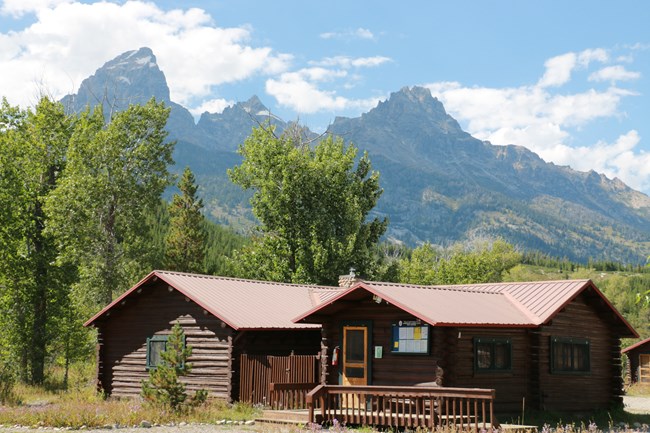

Do you already own a log cabin, or have you built one and you’d like extra rental income?
Cabin rentals in beautiful locations continue at a steady, reliable pace, no matter what the overall economy does or what societal crises we endure. All you have to do is market to your target audience. People will always desire a total getaway from civilization, and if your log cabin is near a major national park or tourist site, even better. Visitors will flock to it.
The craving to live close to nature is innate in all of us. We can see it even in Millennials and the way they turn their rented homes into jungles full of houseplants. Student debt may keep them from buying a house or building a cabin in the wilderness, but they bring Nature into their homes in any way they can.
The next chapter is a testimony from Patricia W. A log cabin enthusiast who restored her own cabin and now lives in it. She also gives us tips on how to build your own miniature log cabin and utilize it as an urn for your loved one.
My Log Cabin Life
What compelled me to renovate an old log cabin in the remote New Mexico mountains? After living in Manhattan’s East Village for 20 years, I was ready for the exact opposite lifestyle. In 2013, I began looking for a place to buy. Even though I spent months jumping through hoops to qualify for a mortgage, in the end I chose a rundown cabin that itself would not qualify for a mortgage. It had no bathroom, no plumbing, no septic system, no heat, and no electricity. I bought it for $55,000 in “cash”—actually, a bit of savings, a loan from two friends, and the rest with credit card cash advances. The real estate ad showed photos of a log shack, and the listing said, “Not for the faint of heart.” Yet it’s true what they say about Location, Location, Location! Most of my neighbors have 20 acres, so my 2/3 acre is surrounded by a big buffer zone of deciduous and Ponderosa pine trees, junipers, and Douglas fir trees. My property is nestled in the mountains, with a creek running along the east side. National forests border the area on three sides.
This 20- X 12-foot log cabin was built around 1920 by descendants of an 1880s gang of Oklahoma bank robbers. The builders were no craftsmen: no walls or angles in the house are actually straight. The ex–bank robbers built many log cabins in the area, but people later tore them down to build big Southwestern-style houses. If you don't fix up an old log house, it will naturally disintegrate. Holes in the roof will allow rain, snow, and wildlife to enter and gradually weaken the structure until no attempt at renovation can save it.
So in seeking this back-to-nature lifestyle, you have two choices: either renovate an old existing cabin or build your own. I’m not sure which is easier. Yet whether you start from scratch and build a handcrafted cedar log home or you renovate an old log house, you will still feel the satisfaction of creating a home with your own two hands. My cabin was in borderline condition, with neighbors speculating whether the new owner (me) would tear it down or fix it up. Because the roof (about 8 layers of patchy asphalt) didn’t leak, I decided that at least the structure was sound. The logs were strong, not moldy, and powder post beetles had chewed them in only a few places. (I later treated the logs with a boric acid solution.) However, the spaces between the logs had been filled with adobe clay that had mostly crumbled away, leaving holes big enough for pack rats and squirrels to enter.


Although I did most of the renovations myself, I’m not crazy. I hired a licensed electrician and plumber, plus professional roofers to put on a pale sage-green Propanel roof. And for really heavy labor, like breaking up cinderblocks with a sledgehammer, I hired workers. It took a crew of 5 men with jackhammers to remove the plywood flooring and break up the impacted clay soil floor of the log cabin, to lower it 18 inches. Originally, the ceiling was so low, you had to bend down to look out the windows. (The house had been built by very short people.) And when the workers saw the crumbling adobe mud of the interior pine log walls, they said, “Why don’t you just cover them with sheetrock?”
Yet I never considered that option. The cabin would have lost all of its charm, authenticity, and feng shui. Yes, my methods were time- and labor-intensive, but the result was worth it.
The log cabin room appeals to both men and women: it’s the ultimate man cave; plus, it has esthetic appeal for women.
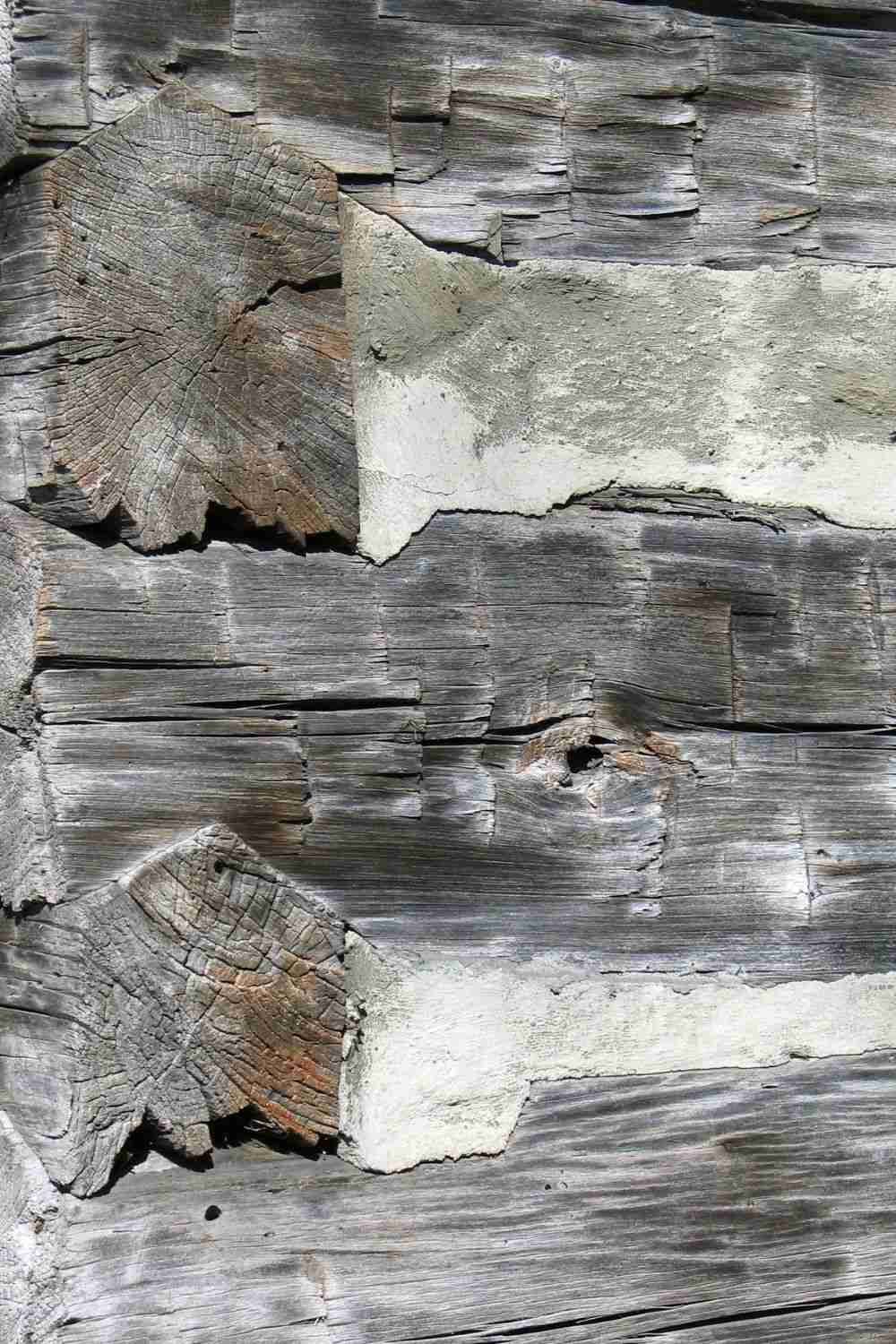

My Treatment for Log Cabin Walls
I discovered the following method by trial and error, but maybe someone else out there also thought of it, and I merely “reinvented the wheel.” It would work for either a log cabin you build yourself or one that you renovate. The key determination is whether your logs fit together perfectly, with no cracks, and whether the logs are uniform enough to use something like straight bands of plaster between each log. This is a lovely effect that I saw in a ranch gatehouse near Madrid, New Mexico. If you have perfect log placement like this, you have many choices and don’t need my method.
If, however, the logs in your cabin are not perfectly straight and of a uniform size, and there are both large and small gaps between them, you need another way to fill the gaps. With my method, you will have to apply the “filling” between all the logs, no matter how wide or thin the cracks. I extended the grout filling to be wider than some of the actual cracks because the strips of grout create a nice pattern alternating with the logs. In my cabin, the main logs are in fairly good condition, despite being 100 years old, but in between some logs, the builders added smaller logs and even strips of wood in a chaotic, random fashion. Then they put mud (adobe clay plus straw) between all the cracks. So I had to choose whether to let some of these small logs and strips of wood show or cover them up with my “filling.” It was a case-by-case decision: some I covered, others I left showing. This cabin interior doesn’t have a uniform appearance because of the way the logs are laid out, but it does look organic and pleasing nonetheless.
Here are the stages of the process (you can skip—but learn from—my first two mistakes with the wrong cement). Initially, to keep wild animals out, I knocked out the rest of the crumbling adobe mud between the logs, then filled the holes with Quikrete cement. But the pebbles in the Quikrete contributed to flaking and instability, so a year later I replaced the Quikrete with another cement. It, too, was not very stable.
Then I discovered Quikrete Professional Non-Shrinking Precision Grout, which is much more expensive but apparently strong enough to even use on bridges. It’s a bit tricky to apply the grout on vertical surfaces; you have to mix it thicker than the instructions say and apply it with a putty knife. After a few minutes, use a damp sponge to smooth it, especially where the grout joins the log. Also, before the grout dries, sponge off any extra that smeared on the logs. It dries as hard as a rock and provides a very tight seal with the logs that even keeps out insects (and deer mice and packrats don’t stand a chance). I wanted to duplicate the look of adobe mud between the logs, so I mixed a few colors of acrylic house paint to achieve a nice taupe shade. Then I painted all the strips of grout between the logs. Finally, I rubbed the logs with boiled linseed oil to accentuate the wood grain.
After the floor had been lowered 18 inches, the interior log walls didn’t extend down that far. Instead, the bottom wall consisted of the ugly cement foundation. So I made a decorative border along the bottom of each wall, using special rocks and fossils I’d collected. I set the rocks in precision grout and applied more around the rock edges so that they joined smoothly. (And again, I painted the grout surrounding the rocks that nice taupe color, so we’re talking months of effort with a small paintbrush.) Then below the rock border, I added a row of large stone tiles.
As an ex–city dweller, I knew nothing about stonework, tiling, carpentry, or constructing walls that imitate the look of plaster. But I learned all of these things from YouTube videos and by asking advice from random men at Home Depot. Self-reliance is something we learn by doing. As the Home Depot slogan says, “Let’s DO this!”
Build-It-Yourself Log Cabin Urn
What better way to honor your loved one’s enjoyment of nature and the simple rustic life than with a Log Cabin Urn? Urns are not simply containers; they memorialize those we love who have passed on. If your dearly departed was a nature lover, you can create a unique personal urn to symbolize everything your loved one cared about most.
Was that special someone always dragging you to campgrounds when you would rather have stayed in a fancy lodge? Did your loved one revel in simple home living and excel as a craftsman or craftswoman, building a cozy breakfast nook and furnishing the house with handcrafted projects? Or maybe these traits describe you instead. You could also build log cabin urn for yourself, as a final symbolic resting place.
Here are some simple instructions, but feel free improvise along the way. And scroll down for other links to building a miniature log cabin.
-
Gather the materials:
You’ll need small, straight tree limbs or branches to cut into miniature logs, and flat boards or slats to build the frame and other parts of the cabin. Also, a table saw or a circular saw, small screws, either brads or wood glue, wood stain, and (optional) various colors of acrylic paint and small paintbrushes. -
Sketch out a plan:
Decide on the size, shape, and dimensions of the cabin. (For help in figuring out the size of container needed for your loved one’s ashes, click here.) Then you can calculate the cabin’s dimensions after that. -
Build the container:
Construct a rectangular box with 4 sides and a bottom but no top, from boards of cedar, white pine, or another softwood. This will form the walls and floor of the cabin. -
Prepare and apply the “log” slabs:
Saw the little tree branches along their length with either a table saw or a circular saw. Saw off the bark side in a thin slab from each branch. Cut enough bark slabs to cover the outer walls of the cabin. Miter both ends of each bark slab, starting at the bottom. The flat, non-bark side of the slab should be the short side of the 45-degree angle. This ensures that the end of each bark slab will be flush with its adjoining slab at the corners of the box. Apply the slabs, bark side facing outward, to the box with staples, screws, or brads. Make sure these don’t penetrate the inside walls of the box, or else trim them off for safety. Place the mitered ends of the bark slabs so that they fit tightly at the box corners. You will have to match the slabs’ widths so that they fit. Continue until the entire box is covered with “logs.” -
Add the roof:
Use thin strips of the softwood lumber to construct “rafters.” Cut the angles so that they fit together to make the roof’s peak and so the bottom of each rafter will sit firmly on the top ledge of the cabin wall. Cut a “ridge beam” and place it between the “gable ends.” Space the rafters equally, then fasten them to the beam. Make “shingles” out of thin strips of lumber. Start at the bottom, the “eave,” and place them so that each successive higher shingle overlaps the one below it. -
Add the cabin details:
You don’t want to cut out doors and windows because the box needs to securely hold the loved one’s ashes without leakage. Instead, you can create the illusion of windows and doors. For example, use a sharp utility knife to cut window squares ONLY in the bark slabs but not penetrating farther into the box itself. Then you can paint windowsills and dark windowpanes to simulate a dark interior, or, conversely, you could paint a little scene inside the windowpanes lit by, say, an image of a lantern. Use your imagination to create the cabin door as well. Cut off the outer bark in a rectangle without penetrating the interior wood box, then add a door made from lumber and paint it. -
Wood-stain the logs and the roof:
Or paint the roof shingles another color. -
Add the ashes and secure the bottom:
Place the ashes inside the box. Drill screws through the edges of the bottom board (the cabin floor) into the side walls. If there are any cracks, fill them with wood glue or another substance to prevent the ashes from falling
For photos and other ideas on building a miniature log cabin, click here and here.

